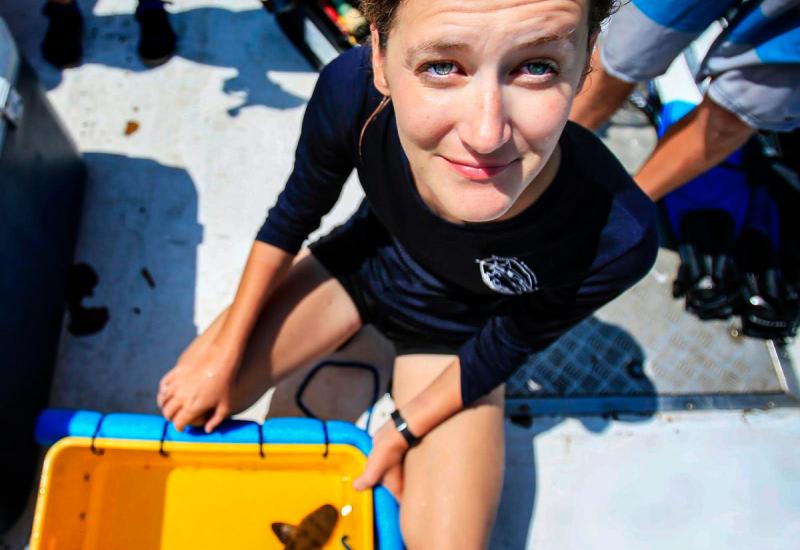Why Celebrities from Amanda Cerny to Philippe Cousteau are Glowing Neon for Coral Reefs
Glowing Gone is pushing global leaders to protect the oceans by painting the town neon.
The campaign, a partnership between The Ocean Agency and the UN Environment Programme with creative partners Adobe and Panatone, recently released a series of free aquatic lenses in the Adobe Photoshop Camera app to make public support riotously visible for more stringent marine conservation measures worldwide. It is their latest move to douse public spaces, products, events and art in neon blue, purple and yellow — colors mimicking the vibrant death-cry of coral reefs.
During most large-scale coral die-offs, the reefs’ vibrant hues fade ghostly white. But, occasionally, the corals fight back, converting from cream to fluorescent in an attempt to protect themselves from the sun. Research indicates that upwards of 90 percent of corals will be lost to bleaching in the coming decades, meaning the collapse of an entire global ecosystem.
Scientists first recorded massive glowing events in the 1990s. Richard Vevers, CEO of The Ocean Agency, personally witnessed a mass coral glowing in New Caledonia in 2016 while filming Chasing Coral.
“This is the most beautiful transformation in nature,” Vevers says in the film. “The incredibly beautiful phase of death.”
With Glowing Gone, he aims to turn that beautiful death into daring hope.
“Let's turn these into colors that can be then used to raise awareness in the same way that colors have been used so successfully for things like the pride campaign,” Vevers told Scuba Diving. “Let's develop a campaign that uses positivity and color and creativity to get support for ocean protection and specifically coral protection.”
The campaign launched last June, leading more than 1,500 artists and designers to suffuse everything from a pro surf competition to hair dye to a parade float in the Glowing colors, which were created in partnership with Adobe and Panatone.
In tinging conservation with a funky aesthetic, the group hopes to reach the “unconverted” outside of “our eco and echo chambers,” says Lisa Rolls, head of Biodiversity Communications and Influencers at UNEP. Demonstrating broad public support makes it harder, she says, for politicians to ignore the call for protections than if only the entrenched ecologic interests are ringing the bell.

Ocean Agency / Adobe StockGlowing corals like these inspired Vevers' Glowing Gone campaign, his bid to make today's world "the first generation to save an ecosystem."
This is where celebrities come in. Rolls makes sure to pull non-aquatic celebrities into the fold in addition to the usual marine suspects; Philippe Cousteau may sway the dive community, but with an audience of more than 45 million across her non-environmentally focused social channels, actress and wellness advocate Amanda Cerny draws new people into the conversation.
The campaign also recently launched an online petition. Though the petition’s call-to-action is a broad statement that the signer supports “greater ocean protection,” the team plans to use the names to support specific marine policies throughout 2021. The first target is the May Convention on Biological Diversity, where world leaders will set biological goals for the next decade. Glowing Gone hopes to immerse attending global decision makers in eye-catching art installations wrought from international signatures and neon images to push the convention to prioritize coral protections recommended by the International Coral Reef Initiative.
The signatures will also be used to advocate for adoption of a High Seas Treaty and instituting strong protections for 30 percent of the ocean by 2030. International assemblies will vote on both issues in 2021 and, like at the Convention on Biological Diversity, Glowing Gone plans to surround the attendant stakeholders with the vibrant names and art of those that support stronger protections.
We want to “laser-point support for action at these key decision-making moments,” says Vevers.
Related:











